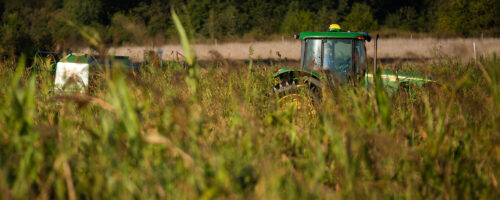Tag: drought
Categories

Wildlife Management Issues During Drought
Estimated reading time: 4 minutes
Lack of rainfall can impact wildlife habitats, food availability and quality in times of drought. Here ar...

Wintering Cattle Through a Drought on a Regenerative Ranch
Estimated reading time: 7 minutes
How you graze and supplement cattle during dry spells can have long-lasting economic and ecological effec...

Recover from drought with a regenerative future in mind
Estimated reading time: 5 minutes
As painful as droughts can be, making a drought management plan can help your ranch emerge stronger and m...

Critical Management Strategies for Dormant Season Grazing During and Following Drought
Estimated reading time: 10 minutes
Take steps to manage the limited forage you have this fall and winter. The right choices not only sustain...

Diversity is Key When Planting Cool-Season Forages During a Drought
Estimated reading time: 7 minutes
The pitter-patter of raindrops on a roof is music to a rancher’s ears. Unfortunately, those moments hav...

Prepare for Drought With Regenerative Ag Mindset
Estimated reading time: 6 minutes
Drought is a natural and regular event in grazing lands. A drought is a period of time when an area or re...

Managing Pastures Before and During Drought
Estimated reading time: 6 minutes
Pasture managers may dread droughts. However, with proper planning and preparation, they can minimize the...

You Cannot Starve a Profit Into a Cow
Estimated reading time: 3 minutesDrought-Induced Poisonings are Dangerous to Livestock
Estimated reading time: 4 minutes